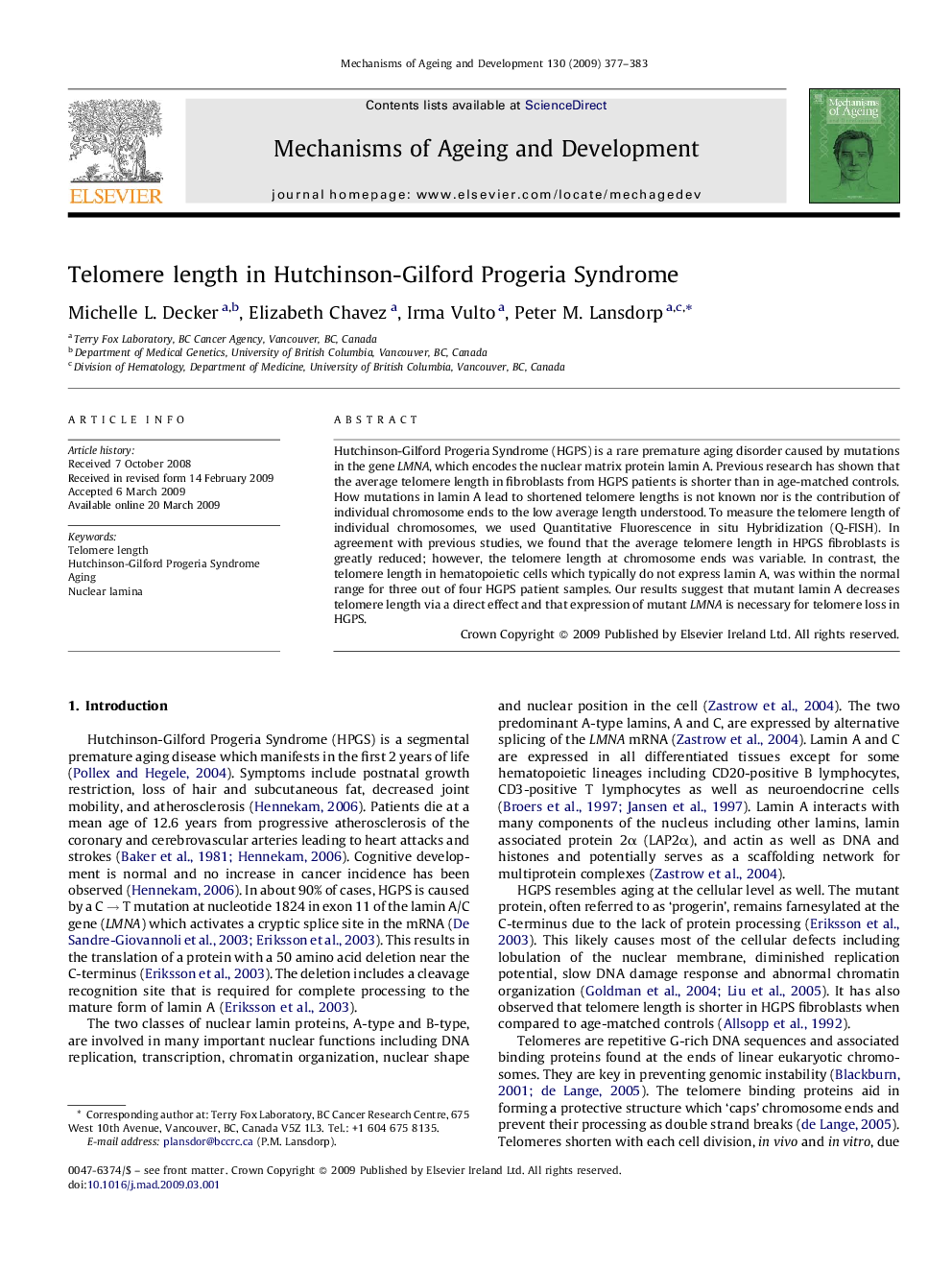| Article ID | Journal | Published Year | Pages | File Type |
|---|---|---|---|---|
| 1919444 | Mechanisms of Ageing and Development | 2009 | 7 Pages |
Hutchinson-Gilford Progeria Syndrome (HGPS) is a rare premature aging disorder caused by mutations in the gene LMNA, which encodes the nuclear matrix protein lamin A. Previous research has shown that the average telomere length in fibroblasts from HGPS patients is shorter than in age-matched controls. How mutations in lamin A lead to shortened telomere lengths is not known nor is the contribution of individual chromosome ends to the low average length understood. To measure the telomere length of individual chromosomes, we used Quantitative Fluorescence in situ Hybridization (Q-FISH). In agreement with previous studies, we found that the average telomere length in HPGS fibroblasts is greatly reduced; however, the telomere length at chromosome ends was variable. In contrast, the telomere length in hematopoietic cells which typically do not express lamin A, was within the normal range for three out of four HGPS patient samples. Our results suggest that mutant lamin A decreases telomere length via a direct effect and that expression of mutant LMNA is necessary for telomere loss in HGPS.
